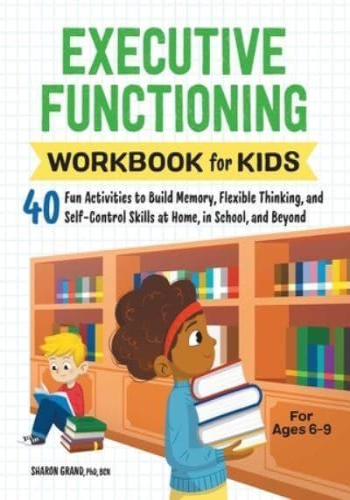Chapter 1: Introduction to Executive Functioning
Summary:
This chapter defines executive functioning (EF) and explains its importance for everyday tasks. EF skills include working memory, attention, inhibition, and self-regulation.
Real Example:
Emily, a 10-year-old girl, struggles to remember instructions and often gets distracted during homework. Her weak EF skills hinder her ability to succeed academically.
Chapter 2: Building Working Memory
Summary:
Working memory is the ability to hold information in mind and manipulate it. This chapter provides exercises to improve working memory, such as memory games, puzzles, and visual memory tasks.
Real Example:
John, a 9-year-old boy, has trouble remembering phone numbers. Using a memory game that involves matching numbers with images, he gradually improves his working memory capacity.
Chapter 3: Improving Attention
Summary:
Attention is the ability to focus on relevant information and ignore distractions. This chapter introduces techniques for enhancing attention, such as mindfulness, visual tracking exercises, and attention games.
Real Example:
Sarah, an 8-year-old girl, experiences difficulty paying attention in class. Through breathing exercises and visual tracking activities, she learns to sustain her attention for longer periods of time.
Chapter 4: Enhancing Inhibition
Summary:
Inhibition is the ability to control impulses and suppress inappropriate behaviors. This chapter teaches strategies for developing self-control, such as delayed gratification exercises, role-playing scenarios, and positive reinforcement.
Real Example:
James, a 7-year-old boy, often blurts out answers in class without thinking. Using delayed gratification exercises where he earns rewards for waiting, he strengthens his impulse control.
Chapter 5: Fostering Self-Regulation
Summary:
Self-regulation is the ability to manage emotions, impulses, and behavior. This chapter provides techniques for promoting self-regulation, including emotional awareness exercises, problem-solving strategies, and self-monitoring tools.
Real Example:
Amelia, an 11-year-old girl, has trouble managing her anger. Through emotional identification exercises and relaxation techniques, she learns to recognize and regulate her emotions.
Chapter 6: Applying EF Skills to Real-World Situations
Summary:
This chapter shows how to apply EF skills to common activities such as homework, chores, and social interactions. It teaches strategies for breaking down tasks, organizing materials, and setting goals.
Real Example:
After struggling with homework assignments, Ben, a 10-year-old boy, learns to use a visual schedule, break down tasks into smaller chunks, and set realistic goals, leading to improved academic performance.
Chapter 7: Supporting Kids with EF Challenges
Summary:
This chapter offers tips for parents, teachers, and therapists on supporting children with EF difficulties. It emphasizes the importance of collaboration, positive reinforcement, and a supportive environment.
Real Example:
Anna, a 9-year-old girl with ADHD, receives support from her teacher who provides structured lessons, visual aids, and modifications to assignments, helping her develop her EF skills.







